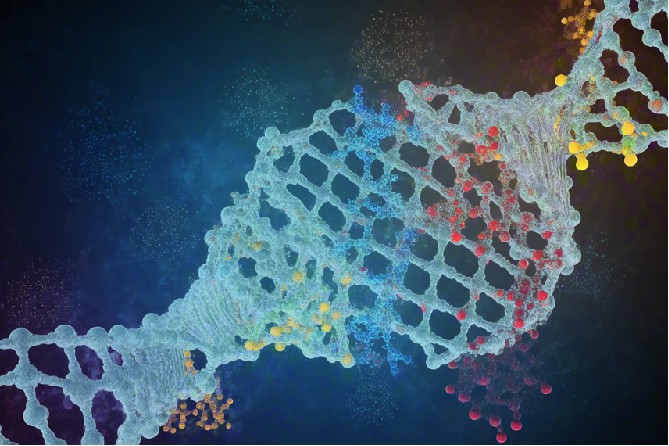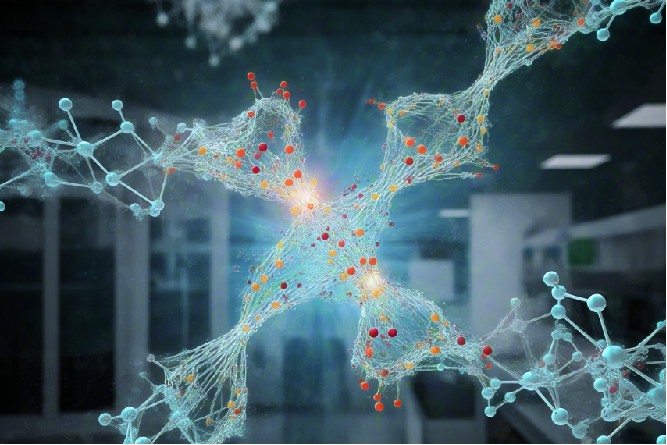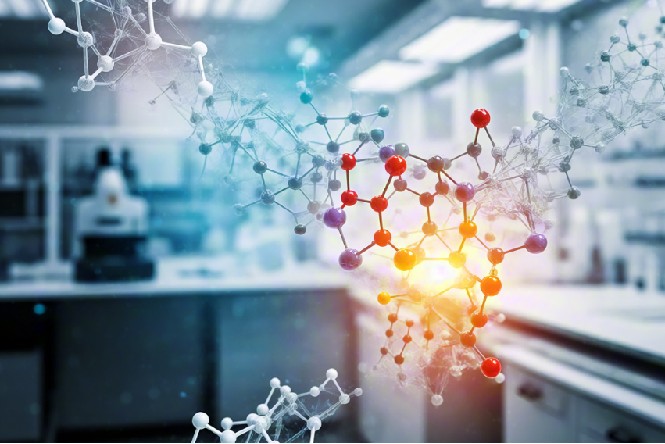Glycoinformatics-assisted Glycomics Analysis Service
Glycoinformatics Expertise for Advanced Glycomics Analysis Service
The research of glycomics covers the connections and interactions between glycans, between glycans and proteins, and between glycans and nucleic acids, and of course, its main object of research is glycans. The rich and diverse glycans cover all the cells of biological organisms and also participate in many biological activities. Therefore, glycomics analysis is of great significance in the field of biology.
As a professional biology company, CD BioGlyco not only masters the glycoinformatics technology to provide high-quality Glycoinformatics Services to our clients but also combines informatics with biology to provide glycoinformatics-assisted glycomics analysis services. Here, the specific services we provide to our clients are as are as follows.
Isolation and purification of glycans
The isolation of the glycans is often the first step in performing glycomics analysis. Depending on the nature of the different types of glycans, we offer specific isolation and purification methods.
- Affinity chromatography (AC): Free sugars, monosaccharides, and oligosaccharides bind specifically to lectins and can be separated using AC.
- Hydrophilic chromatography (HC): In HC, the stationary phase is a polar adsorbent with strong hydrophilic properties and the mobile phase is water or an organic solvent. Purification is carried out by attaching a ligand that binds specifically and reversibly to the sample to be purified to a water-insoluble carrier.
- Gel filtration chromatography (GFC): The use of GFC with different pore sizes can effectively separate proteoglycans and can specifically recognize glycosaminoglycans, thus realizing the separation and purification of glycosaminoglycans in proteins.
- Weak anion exchange chromatography (WAEC): WAEC can separate and purify glycan chains with charged groups, such as glycans with sialic acid or carboxyl groups.
- Size-exclusion methods: N-linked glycans that utilize the size-exclusion effect of mesopores on proteins, as well as glycan-carbon interactions, can be used for purification.
Structural analysis of glycans
Mass spectrometry (MS) is a valuable tool for performing structural analysis of glycomics, and we utilize a variety of MS techniques to analyze glycans, such as matrix-assisted laser desorption/ionization MS (MALDI-MS), liquid chromatography-MS (LC-MS), and others.
- First, we perform parallel experiments on a variety of samples using MS to collect their complete glycan structure spectra.
- Next, these spectra are collected into the corresponding database.
- Finally, we identify the complete glycan structure based on the complementary information from MS in the database and evaluate the glycan composition by inputting the spectral peak data from the MS data.
LC-MS can also provide structural information on glycoconjugates by deciphering different glycoprotein isoforms from a single protein. Disease-associated glycoconjugates identified by LC-MS can be further evaluated or validated by immunohistochemistry, and the expression of the glycoconjugates can be visualized by cell staining or fluorescence.
Quantitative analysis of glycans
In glycomics research, LC-MS allows for the quantitative analysis of glycan chains with high sensitivity and accuracy. LC allows for the separation of various components in complex samples, which can then be detected and quantified by MS.
Analysis of biomarker glycans
Abnormalities of glycoconjugates characterize diseases and are a biomarker. The biomarker glycans can be efficiently analyzed when combining MS with different labeling techniques.
Glycans can be labeled by affinity-based probes, including lectins and antibody couplers, direct chemical modifications, metabolic glycan labeling, and chemoenzymatic labeling, to name a few, enabling visualization and tracking of glycans in cells, tissues, and organisms.
Establishing the foundation of glycan labeling methods, we utilize MS mapping to achieve qualitative and quantitative analysis of glycans.

The specific glycoinformatics-assisted glycomic analysis services we provide to our clients include but are not limited to the following.
CD BioGlyco provides disease glycomics services to our clients based on our extensive knowledge of glycoinformatics. The types of diseases included in the disease glycomics services we provide to our clients are not limited to the following.
-
Malaria
-
Cancer
For cancer glycomics analysis, CD BioGlyco provides services that include but are not limited to, the following.
-
Neuronal Diseases
In neuronal diseases glycomics analysis, CD BioGlyco provides services that include but are not limited to, the following.
-
Diabetes
CD BioGlyco uses single-cell RNA-seq data to characterize the state of glycosylation mechanisms and metabolic networks in individual cells, predicting the highly transcriptionally regulated processes involved in the cell glycome in different glycosylation pathways. The specific services we provide include but are not limited to, the following.
Publication Data
Technology: MALDI-MS
Journal: Frontiers in Chemistry
IF: 5.5
Published: 2021
Results: In this article, the authors demonstrate an automated tool for MALDI-MS-based processing of glycan isotope labelling data to facilitate the pre-processing, identification and quantitative analysis of glycan data. In testing the processing of data for glycan analysis, the tool demonstrated fast processing speed, searching for matching glycan data within minutes. In addition, the MALDI-MS based automated tool can be easily adapted by the user to specific experimental designs, like specific glycan databases, varying derivatisation types, and relative quantification designs, therefore promoting rapid glycomics quantification using MALDI-MS based stable isotope labelling for clinical sample analysis.
 Fig.1 Flow of MALDI-MS based glycan data processing. (Huang, et al., 2021)
Fig.1 Flow of MALDI-MS based glycan data processing. (Huang, et al., 2021)
Applications
- Glycans play an important role in life science research, including cell signaling and disease development. Glycomics analysis can help researchers determine the composition and structure of different glycan molecules in the glycomics group, which in turn helps them understand the role of the glycomics group in biological processes such as cell signaling.
- Glycoinformatics-assisted glycomics analysis service can help researchers mine valuable information from the massive amount of glycomics data and improve research efficiency.
- Glycoinformatics-assisted glycomics analysis service can help researchers understand the role of glycomics molecules in disease development, immune system regulation, etc., and provide new ideas for research in related fields.
Advantages
- Our team consists of multi-disciplinary experts including bioinformaticians, biochemists, and biologists, integrating knowledge and techniques from different fields to help our clients understand the structure and function of glycans more comprehensively.
- Our service team has mastered both glycoinformatics and glycobiology skills to provide custom glycomics analysis solutions according to our client's project needs.
- Our team utilizes the latest bioinformatics tools for glycomics analysis to provide researchers with glycan structures for prediction, simulation, and analysis.
Frequently Asked Question
- What is glycomics?
-
Glycomics is an emerging discipline that researches the structure and function of glycan chains, which together with nucleic acids and proteins constitute the three life chains of human beings. DNA genetic information is transcribed and translated into proteins, and most of the proteins need to be attached to glycan chains by glycosylation modification to form glycoproteins to perform their functions. Glycomics and glycan chain markers are important for disease prevention, screening, diagnosis, and treatment, as well as evaluation and validation of health management.
- What is the process of glycomics analysis?
-
Sample preparation: Samples may be biological samples from cells, tissues, blood, urine, or other sources. These samples need to be pre-treated and extracted to obtain sufficient sugars for analysis.
- Glycan extraction: Glycans are extracted from the sample using appropriate extraction methods.
- Chromatographic separation: Glycomics typically uses chromatographic techniques (e.g., LC and MS) to separate and detect sugars in samples.
- MS analysis: The isolated glycans are analyzed qualitatively and quantitatively by MS techniques to determine their species, structure, and content.
- Data processing and analysis: Bioinformatics techniques and tools are used to process and interpret MS data to obtain structural and functional information about the glycomics data.
CD BioGlyco is a company dedicated to biological research, offering a wide range of glycomics analysis services to our clients. Our service team has the advantages of a professional background, advanced technology, complete solutions, customization, data safety and security, and efficiency and speed to ensure that our clients' project needs are met. Please feel free to contact us if you are looking for a partner in the field of glycomics analysis, we will be your high-quality helper.
Reference
- Huang, J.M.; et al. gQuant, an automated tool for quantitative glycomic data analysis. Frontiers in Chemistry. 2021, 9: 707738.
For research use only. Not intended for any diagnostic use.
Quick Links
Related Services



 Fig.1 Flow of MALDI-MS based glycan data processing. (Huang, et al., 2021)
Fig.1 Flow of MALDI-MS based glycan data processing. (Huang, et al., 2021)


